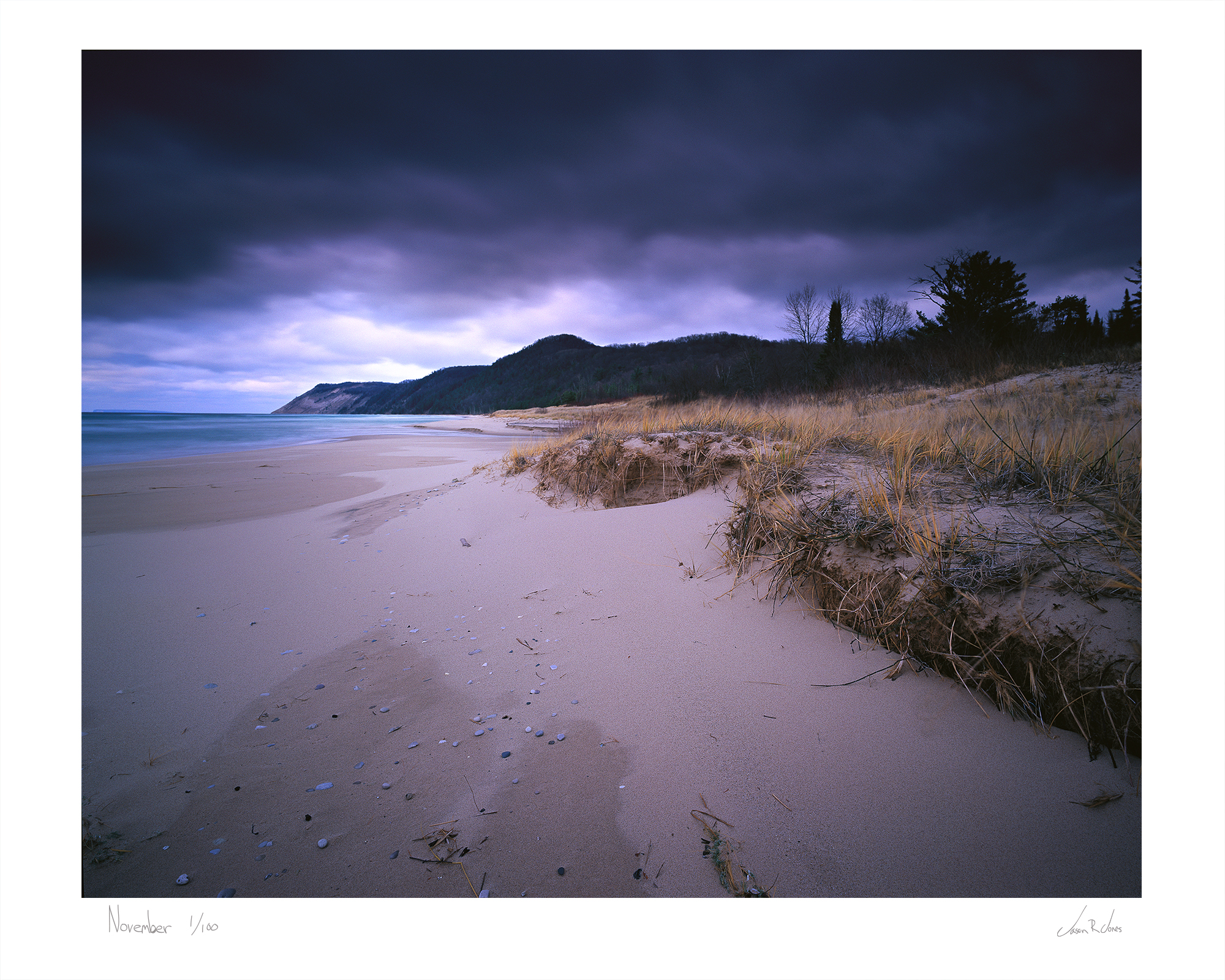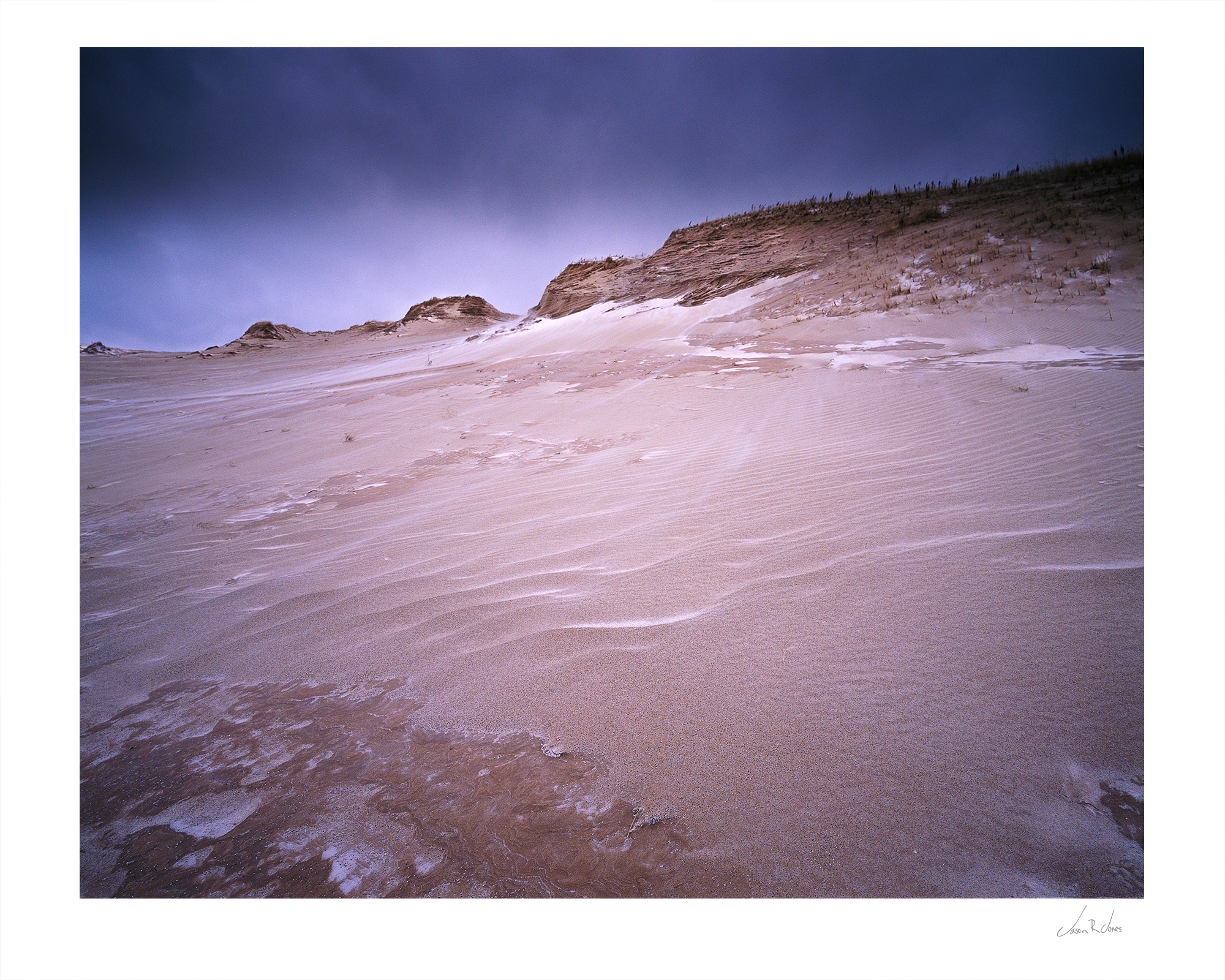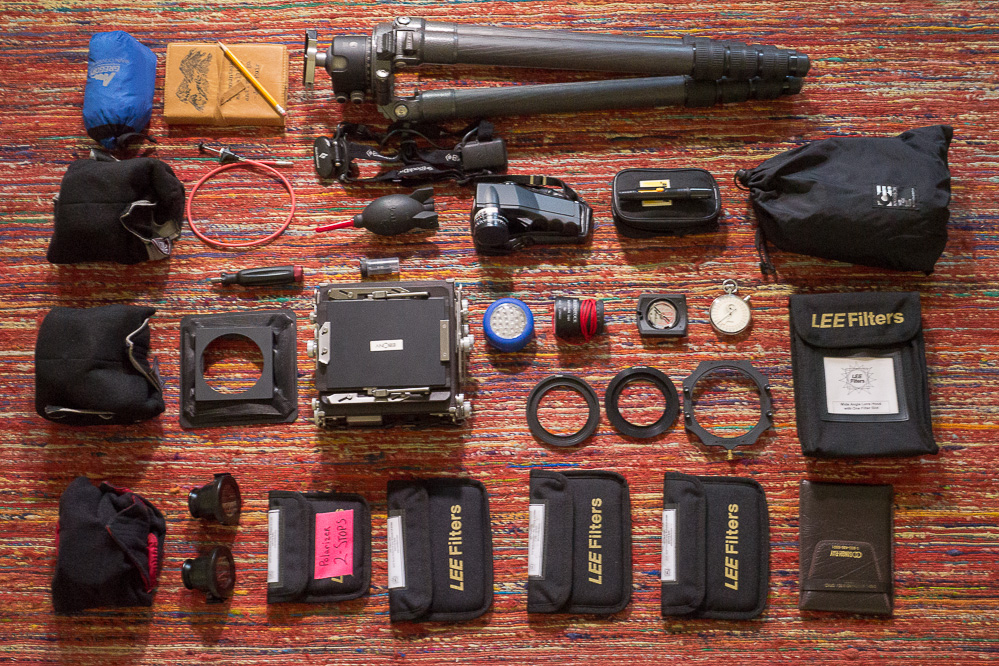Inside the Whitney are all the components you see pictured below. My camera body an Ebony SV45TE and 3 lenses, Schneider 90mm f/8 Super Angulon, Schneider 120mm f/5.6 Super Symmar, and Rodenstock Apo-Sironar-S 210mm f/5.6. All great lenses however the f/8 aperture on the Super Angulon can prove difficult to use when lighting conditions are not adequate. I carry two sets of bellows, one is a standard and the other is a wide angle, both shipped with the camera body. Four 4x6 100mm neutral density grad filters and LEE100mm filter adapter kit. ND filters are the LEE 2 stop hard, LEE 2 stop soft, LEE 3 stop hard and the Daryl Benson Reverse ND Grad from Singh Ray. I also have a LEE Filters VH-95 Bellowed Video Hood, which comes in handy as a lens hood with 2 slots for ND filters and a 95mm filter thread I use for attaching my Heliopan 95mm Circular Polarizer. This helps when it comes to different size filter threads as the LEE adapter is much less expensive than buying several polarizers. I carry two view finders, one for each format I shoot, my 4x5 and my 6x17 roll film back. If I could recommend a tool for visualizing and composing it would be one of these view finders. They are small and can be taken along when scouting a location and they force you to close one eye and see in 2d which is extremely helpful as a photograph is a 2d representation of the subject photographed. I also carry a Rodenstock 4x Lupe, stop watch, compass, led headlamp and puck light, lens cleaning kit, Giottos rocket blower, 2 cable release, journal and pencil, rain cover, dark cloth and a Pentax digital spot meter. Lastly is my tripod a Gitzo Systematic with a Really Right Stuff bh-55.









